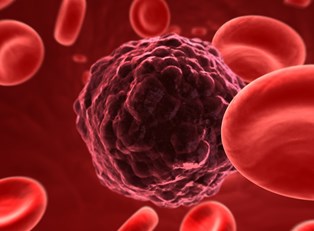Chronic myelogenous leukemia is a form of leucosis; CML is a disease of a tumorous nature and cloning character, which develops as an early predecessor of myelogenesis, the morphological substrata of which are predominantly maturing and mature granulocytes, mostly neutrophils.
In relation to leucosis, only the clone origin theory is proven: the development of a tumor from an originally mutated cell. Leucosis can be ranked among benign tumors as well as malignant tumors. The changes take place on the side of the white blood cells in the process of chronic myelogenous leukemia.
One cubic mm of a healthy man's blood contains about 5-8 thousand leucocytes, which absorb bacteria and dead cells and produce antibodies. In leucosis, malignant cells grow more rapidly than any other cells. The human body loses its tolerance to infectious diseases, and the heat exchange suffers. Three stages or phases are identified in CML: the Slow, or chronic, phase, which develops within about 3 years; Acceleration phase running for about 1-1½ years. With the help of some quality CML treatment this stage can be recalled to the chronic stage, and the Final phase, one of rapid acceleration and blast crisis (3-6 months), usually resulting in death.
CML Symptoms
As far as symptoms of CML go, patients complain about overall fatigue, the feeling of heaviness in the left hypochondrium, excessive sweat, and bleeding gums. In the course of examination, those diagnosed with chronic myelogenous leukemia - significant enlargement of spleen is discovered (spleen, as well as bone marrow, is subject to myeloid metaplasia, as a result of which it reaches streteches to great sizes up to 40 cm in diameter, and weighing up to about 7 kg, occupying large space in the abdomen), as well as lymph nodes, paleness of skin integuments, and atrophy. Body temperature rises very high.
In the course of blood analysis, immature forms of leucocytes of myeloid formation are discovered: myeloplasts and neutrophilic myelocytes; and the number of leucocytes significantly increases as well. In the course of sternal puncture, a large number of myeloplasts and promyelocytes are identified (healthy bone narrow does not contain a large number of myeloplasts). Anemia is observed. Generally speaking, chronic myelogenous leukemia proceeds in waves, with periodic recrudescence followed by remission. Probably the worst complication is hemorrhagic diathesis with excessive bleeding, where urgent CML treatment is required.
CML Treatment
Chronic myelogenous leukemia is an undesired disease, but CML is not to be feared. CML treatment is available and well-developed today. CML Treatment is conducted in the hospitals and has to do with a rational diet with the inclusion of sufficient amounts of proteins, vitamins, accompanied with strengthening therapy. Busulfan in pills is prescribed in cases of apparent leukemic form up to 8 mg per every 24 hours, and when the number of leucocytes drops, its dosage is cut down to 2 mg per 24 hours with an overall amount of 250-300 mg for one CML treatment. If Busulfan proves to be ineffective, yelobromolum is prescribed (5-6 times 250 mg each time with an overall consumption reaching up to 10 g per regimen therapy), and Chlorethylaminouracil (10 mg per 24 hours, 1 time for 7 days).
Some believe that currently among various medicine treatments of CML the main CML treatment is a target therapy by means of Imatinib and other medicines, which have greatly improved the survival index. Other treatments suggested for chronic myelogenous leukemia are roentgenotherapy, which is a radiation exposure of the spleen, bones and lymph nodes, accompanied by specimens of radioactive phosphorus. Hormonotherapy is also prescribed when treating CML. In a number of cases repeated haemotherapy and bone marrow transplantation are performed.



